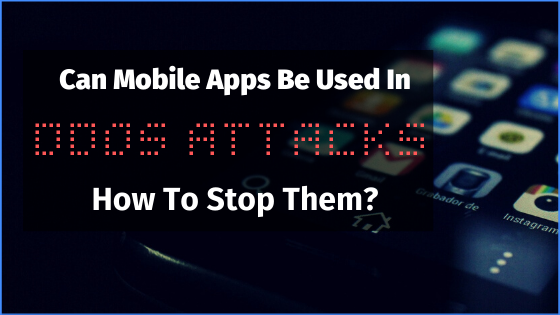Mobile devices, and consequently mobile apps, contribute the largest share to the burgeoning Internet traffic. According to the latest cybersecurity trends, this has caused a spike in the threats posed by a distributed denial of service (DDoS) attacks. DDoS attacks on mobile apps are hence real and can cause huge ramifications to app owners. This has increased mobile app vulnerabilities and provided hackers with newer attack vectors. It is, thus, essential to understanding the significance of DDoS to handle your business and customers’ security concerns better.
Nature of DDoS Attack
DDoS is a technique employed for cyber attacks wherein multiple infected computers or devices act as a network of bots and make the resource intended for users unavailable. This makes threat propagation easier through mobile apps and helps in controlling mobile devices, which in turn become attack vectors for hackers. Hence, you are either a victim or a source for further attacks. Reduced revenue, loss of customer trust, and increased expenditure for remediation are some of the repercussions in case of a well-executed DDoS attack.
Propagation of DDoS Attacks
Mobile apps are a fertile medium to effect DDoS attacks with deleterious consequences for the business. This is because it is easier to profile users and thus increase the probability of a successful DDoS attack. Almost 80 percent of mobile apps hosted in Playstore does not have a robust security mechanism and have glaring security bugs. This provides a playing field for hackers to utilize the unresolved bugs to their advantage and perform secret DDoS attacks. Apps which handle finance and banking services are most susceptible to DDoS, as they provide the maximum bang for the buck for hackers. This obviously does not augur well for customer trust whose personal and financial privacy is at stake. The emergence of social information aggregators, like Facebook, Uber, Instagram, etc., profile users, which are cunningly employed by hackers to mine data to their advantage.
DDoS attacks can be easily initiated in mobile devices and scaled up from there. Users downloading an infected app from Playstore and installing them on their mobile devices become susceptible to planned DDoS attacks. Alternatively, the device itself can be used to serve as an input for another DDoS attack. DDoS enables hackers to take full control of a device without the owner’s knowledge.
Apps as DDoS Threat Carriers
In 2017, Google removed approximately 300 apps from its Playstore, as they were found to be infected with WireX botnet, which secretly compromised Android devices to supply traffic for DDoS attacks. The scariness and magnitude of the attack can be gauged from the fact that more than 100,000 devices spanning users in 100 countries were found to have been compromised by these apps.
Mobile devices of users who installed WireX-infected apps were added to a larger network which routed junk traffic to certain websites to take them down and render them inaccessible to the outside world. Hence, seemingly “safe” apps often become carriers of threat vectors which can play havoc with innocent users’ information stored in mobile devices and apps.
Safety Measures
As users, you ought to follow certain principles that can help you defend against malicious DDoS attacks. Over and above, it requires an intelligent and rational approach towards using your mobile apps, both for personal and enterprise usage. We outline below some measures which you can immediately imbibe to protect yourself from DDoS threats.
- Keep your mobile OS and apps updated, which usually come with regular security patches and provide the first-level shield against major threats. Mobile companies and app developers work closely with security companies to solve security issues and release updates to quash them.
- It is always preferable to choose wisely amongst a plethora of apps – in addition to satisfying your requirements, it should have a good track record in terms of security and user feedback. This will go a long way in establishing a trust factor and safeguard you against pseudo apps that have a namesake, but once installed infect the device.
- Never install APKs from websites other than authorized platforms like Playstore/Appstore. Premium APKs available “for free” on websites are usually ridden with malware, which is ripe for DDoS attacks unbeknownst to the user!
- Install apps only from trusted developers, even if they are installed from Playstore. Such apps usually do what is intended and do not “misbehave.” They are usually more secure and capable to handle security threats.
- Install an anti-virus app on your mobile device. It keeps an all-around vigil about any inadvertent activities in your device, including apps’ behavior. For enterprises, a comprehensive mobile app security solution suite should be implemented as much is at stake than usual run-of-the-mill mobile usage.
Eventually, entrepreneurs and users’ should recognize the importance of mobile app security and threats posed by DDoS to their privacy. This shall help them understand security risks better and help them to invest in comprehensive security solutions, like AppSealing, which are capable to handle all security threats effectively. These invariably constitute the best practices to guard against looming app security vulnerabilities.






